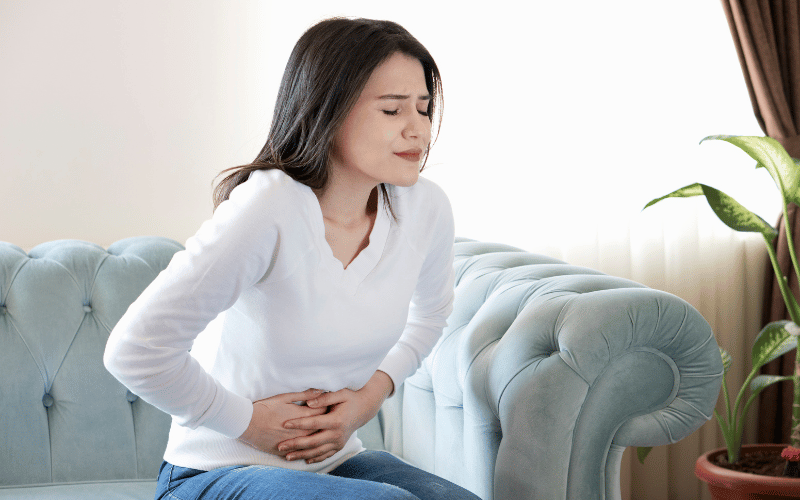2. Abdominal Cramping: A Deeper Problem

While the skin’s visible swelling is the most recognizable symptom of angioedema, the condition can also affect the body’s internal systems. Many patients report feelings of discomfort or pain in the abdomen, which can be initially mistaken for digestive issues or even menstrual cramps.
This abdominal discomfort results from the swelling of the intestinal walls. When the inner lining of the intestines becomes inflamed, it can lead to a range of gastrointestinal symptoms. These are not just minor discomforts; they can be profoundly debilitating and disruptive.
The swelling within the intestines, much like the external swelling, is a reaction to triggers. While for some, it might be an allergic reaction, for others, it can be due to hereditary factors. Either way, when the intestines swell, they can impede the movement of food and gas, leading to the characteristic cramping and associated gastrointestinal issues. (2)